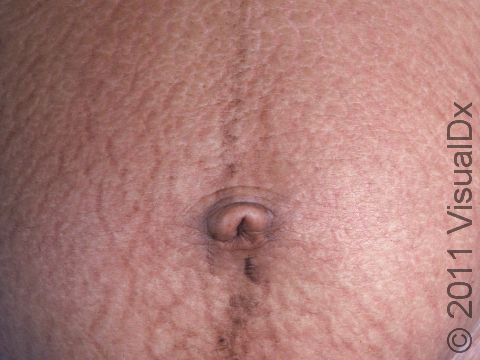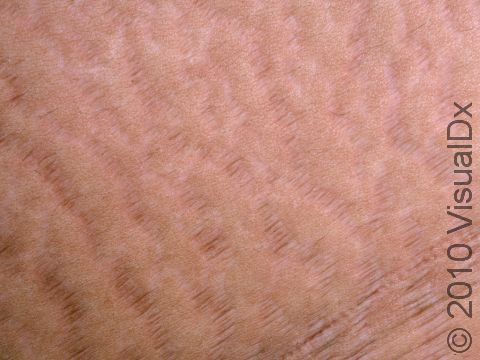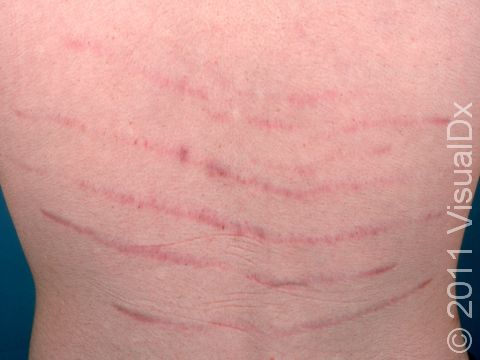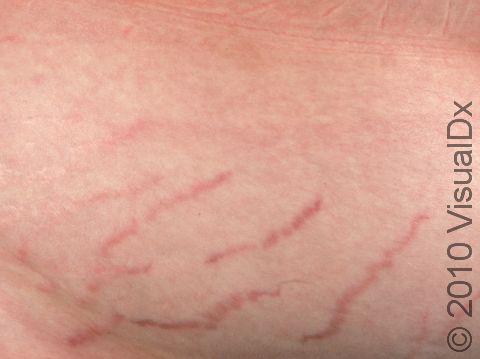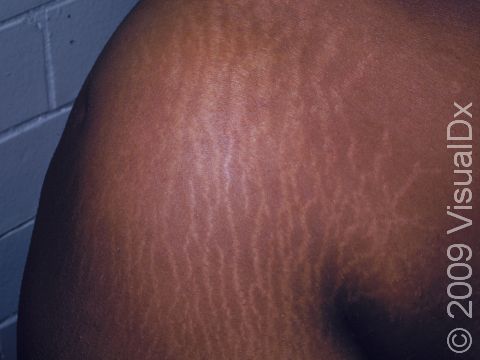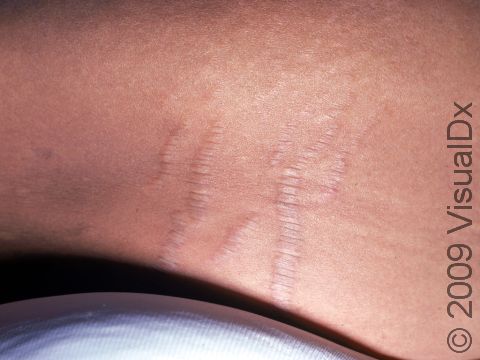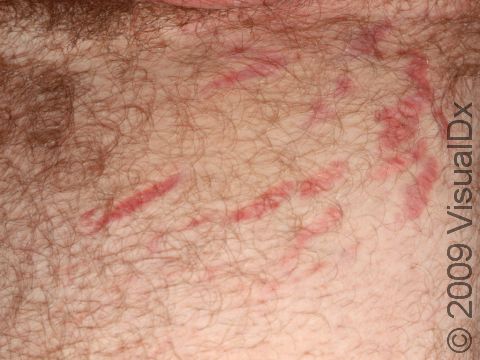Stretch Marks (Striae)
Striae is the medical term for stretch marks, which are the red- or white-striped skin markings that happen when someone has a change in the size of their body, such as with rapid weight gain or loss or with pregnancy. Less commonly, stretch marks can occur with rapid muscle bulking, such as with steroid use, or with some adrenal gland disorders. The most common place to see stretch marks is in the place where the skin has stretched, so in a pregnant woman this is the belly, in a teenage girl this is often the breasts or hips, and in a teenage boy this is often the arms or shoulders. The marks are permanent once they are formed, and there is no certain way to prevent or treat them.
Who's At Risk?
In the US, almost all pregnant women, many teen girls, and about half of teen boys have stretch marks.
Signs & Symptoms
Stretch marks are usually seen on the belly and breasts during pregnancy; the thighs and lower back of teen men; and the thighs, buttocks, and breasts of teen women. They are common on the shoulders of bodybuilders. Stretch marks may be widespread or occur in other locations in people who are using corticosteroids or have an underlying disease.
Stretch marks change in appearance with time. Early on, they are faint pink, appearing in a line, or they are parallel band-like marks, which might be slightly itchy. Stretch marks gradually enlarge and become red to purple, often with a wrinkled surface. Finally, they become white, slightly flatter (depressed), with a crepe-paper appearance of linear marks 1–10 mm wide and many centimeters long.
Self-Care Guidelines
- Stretch marks appearing in adolescence often improve with time. No treatment is needed.
- Where applicable, stop using topical corticosteroid creams in that skin area. Over-the-counter creams are useless.
Treatments
If the stretch marks are cosmetically distressing, early red areas can be medically treated, but treatments would not be covered by insurance.
- If the red appearance of the early lesions is bothersome, tretinoin cream may improve the appearance.
- Laser treatments and chemical peels may also be used.
- If the diagnosis is uncertain, a biopsy and blood tests might be done.
Visit Urgency
See your doctor if stretch marks appear without an obvious cause (pregnancy, rapid weight gain, adolescent growth).
References
Bolognia, Jean L., ed. Dermatology, pp.1542-1543. New York: Mosby, 2003.
Freedberg, Irwin M., ed. Fitzpatrick’s Dermatology in General Medicine. 6th ed. pp.1028. New York: McGraw-Hill, 2003.
Last modified on August 16th, 2022 at 2:44 pm

Not sure what to look for?
Try our new Rash and Skin Condition Finder

